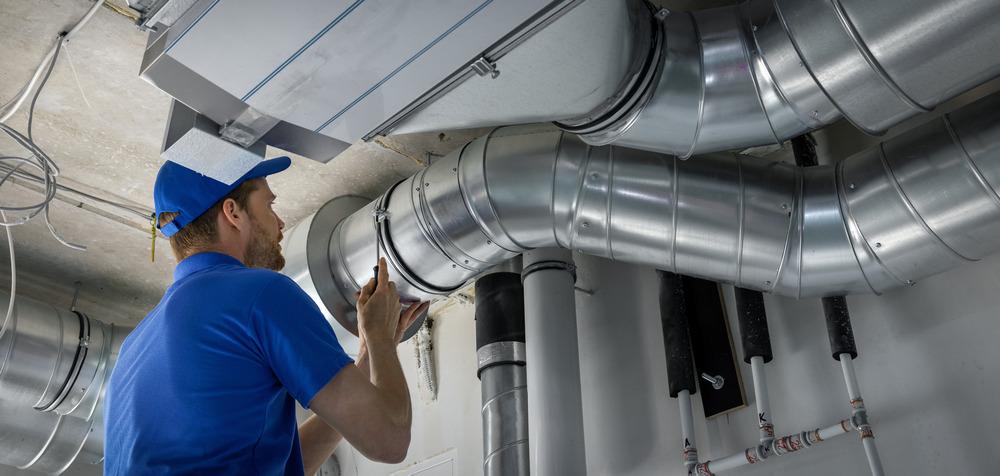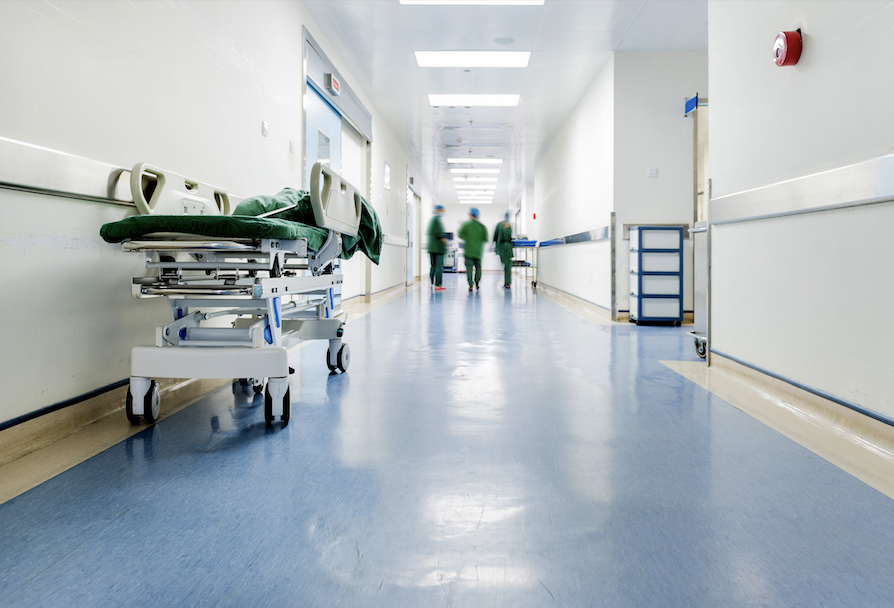Ventilation professionals have a critical healthcare role and could help to save thousands of lives over the coming years by ensuring building occupants are protected from a range of dangerous pollutants, according to Graeme Fox, technical director of the Building Engineering Services Association (BESA).
Cleaning ventilation ductwork has often been considered one of those ‘out of sight out of mind’ tasks that can be postponed or avoided entirely to reduce cost, but the Covid-19 pandemic proved just how risky that strategy can be.
Poorly maintained, dirty air ducts cannot provide the level of air quality needed to safeguard human health and well-being in buildings.
Accumulated debris obstructs airflow, forcing fans to work harder to maintain the desired temperature and air change rates – so there is also an energy efficiency aspect to this. Indoor Air Quality (IAQ) is affected by a cocktail of contaminants including carbon monoxide from cooking and heating, spores from mould and condensation, particulate matter, and smoking.
Also, more volatile organic compounds (VOCs) are emitted from indoor sources, like aerosols, paint, and furnishings, than transport.
Growing numbers of healthcare experts now recognise that investment in building and facilities management can, therefore, have a dramatic impact on a range of chronic illnesses. And, in response, the industry is investing considerable time, expertise and money in updating its technical guidance and training.
Revolutionising
The latest example is a new specification for ventilation hygiene which has been widely hailed as “a big step towards revolutionising air quality in buildings”.
BESA’s TR19® Air ‘Specification for internal cleanliness and hygiene management of ventilation systems’ was designed to address an urgent need for better cleaning and maintenance of ventilation ducting, which was highlighted by healthcare professionals as crucial to reducing building occupants’ exposure to harmful airborne particulates and pollutants.
To support the new specification, the Association’s training Academy has also updated two of its air hygiene training courses. These are designed so contractors can help their clients meet health & safety obligations and comply with increasingly stringent legislation.
Ventilation management is also at the heart of the challenge to reduce energy consumption and prolong system life in line with wider carbon reduction goals.
Cleaning will allow the system to operate more efficiently and reduce wear and tear. This will also be an increasingly important consideration when retrofitting buildings to achieve net zero.
The new TR19® specification covers all relevant legislation and professional guidance, including BSEN15780 ‘Cleanliness of Ventilation Systems’, which has been the British and European Standard since 2011.
It also reflects the aspirations of the first British Standard for Health and Well-being in Buildings British Standard 40102 (Part One), which is being launched this year and provides recommendations for measuring, monitoring, and reporting indoor environmental quality (IEQ) in non-domestic buildings.
It is the first standard of its type in the world and was unveiled at the recent COP28 climate conference in Dubai.
It will be formally launched in the UK later this year, and provides recommendations for measuring, monitoring, and reporting indoor environmental quality (IEQ) in all types of non-domestic buildings. It includes an evaluation and rating system for air quality, lighting, thermal comfort, and acoustics.
It champions tighter exposure limits based on the UK government’s own Daily Air Quality Index, World Health Organisation (WHO) guidelines which were updated in 2021, and existing measures in Approved Document F, as well as other industry standards including BS EN 16798-1. This makes it another important tool in the armoury of ventilation and air quality contractors.
Healthcare specialist Dr Philip Webb, chief executive of Respiratory Innovation Wales (RIW), helped to develop the new standard which he said was a response to a growing “indoor environmental quality (IEQ) crisis”.
He believes the standard could play a big part in driving greater investment in building and facilities management and so help reduce excess deaths related to respiratory, cardiovascular, and mental health conditions.
He called for a fundamental reassessment of the way public money and resources were allocated to tackling air quality, which he says is responsible for higher numbers of excess deaths than the Covid-19 pandemic, cancer, heart disease and mental health combined.
Fraction
According to data from Public Health Wales, Covid-19 was responsible for 38 deaths per 100,000 of the global population, smoking annually accounts for 180, and cancer 278, but air quality is responsible for up to 1,400 excess deaths per 100,000 every year.
However, it receives a tiny fraction of the public money and resources allocated to health and wellbeing services.
Webb also pointed out that there were 3,000 new occupational asthma cases reported in the UK every year linked to the air quality in workplaces.
“We are suffering from a legacy of poor building design dating back to the 1960s and 70s,” he said.
“If properly supported, facilities and building management systems could have a bigger impact on health and wellbeing than the whole of the global health and social care system,” said Webb.
Another threat to the health of building occupants is the growing problem of overheating. The UK building stock is not well equipped to cope with our increasingly hot summers and milder winters.
The Environmental Audit Committee (EAC), which advises the government, warned that the country was poorly prepared to deal with this “silent killer” with vulnerable groups, including the elderly and the socially disadvantaged, at greatest risk.
Its recent report: ‘Heat resilience and sustainable cooling’ says that both physical and mental health are affected by rising temperatures with suicide risk believed to be twice as high when the temperature reaches 32°C compared with 22°C.
The committee of MPs also said high temperatures cost the UK economy £60bn a year due to work-related accidents and lack of sleep.
It said more than 4.6 million homes in England experience summertime overheating – underlining the huge scale of the potential retrofit challenge.
This puts a whole new complexion on the debate between retrofit and rebuild on the road to net zero.
With the need to retrofit both residential and commercial buildings to improve energy efficiency already established as part of the UK’s net zero ambitions, addressing overheating must now be built into any comprehensive national retrofit programme.
Passive cooling measures, such as green roofs and solar shading, can mitigate some of the problem and would require no additional energy input, but similarly efforts to decarbonise heat and improve ventilation for health and well-being must be addressed simultaneously.
For example, improving building airtightness should not lead to additional overheating problems so long as the ventilation and cooling measures are designed alongside. In fact, the opposite is true as better building fabric with intelligent ventilation solutions makes it easier to control indoor temperatures and reduce other problems such as condensation and mould.
TR19® Air costs £75 for BESA members and £150 for non-members and can be downloaded from the BESA website. Anyone booking onto one of the BESA Academy training courses will also receive a free copy. Details can be found here.





